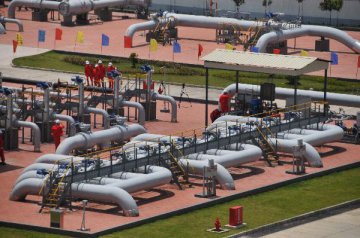China will drive a spectacular growth in the use of natural gas as it seeks cleaner energy sources in the future, according to the director of the International Energy Agency (IEA).
"Natural gas demand is growing very strongly, the fastest growing fuel. The Chinese effect on the gas markets now is very similar to the effects we saw 10 years ago on the oil markets from Chinese demand," Dr Fatih Birol, executive director of the IEA told a press briefing in London on Tuesday.
"China is becoming the world's largest natural gas importer, overtaking Japan and this has huge implications for gas markets and for gas prices," Birol added.
Global gas demand would increase by 1.6 percent each year up to 2040, making demand 45 percent higher than today, the IEA's latest publication the World Energy Outlook (WEO) reported.
Natural gas, including liquefied natural gas (LNG), was set to become the world's second largest energy source by 2030 after coal, as big energy consumers globally sought to cut carbon emissions.
"The biggest change in our projections this year is China," Tim Gould, Head of Division at the IEA's WEO said at the launch of this year's edition of the WEO.
"Gas is a good fit for China's policy preferences including growing attention to the quality of growth, the quality of air and the needs of China's growing cities," Gould added.
"Natural gas demand is growing very strongly, the fastest growing fuel. The Chinese effect on the gas markets now is very similar to the effects we saw 10 years ago on the oil markets from Chinese demand," Dr Fatih Birol, executive director of the IEA told a press briefing in London on Tuesday.
"China is becoming the world's largest natural gas importer, overtaking Japan and this has huge implications for gas markets and for gas prices," Birol added.
Global gas demand would increase by 1.6 percent each year up to 2040, making demand 45 percent higher than today, the IEA's latest publication the World Energy Outlook (WEO) reported.
Natural gas, including liquefied natural gas (LNG), was set to become the world's second largest energy source by 2030 after coal, as big energy consumers globally sought to cut carbon emissions.
"The biggest change in our projections this year is China," Tim Gould, Head of Division at the IEA's WEO said at the launch of this year's edition of the WEO.
"Gas is a good fit for China's policy preferences including growing attention to the quality of growth, the quality of air and the needs of China's growing cities," Gould added.




















Latest comments